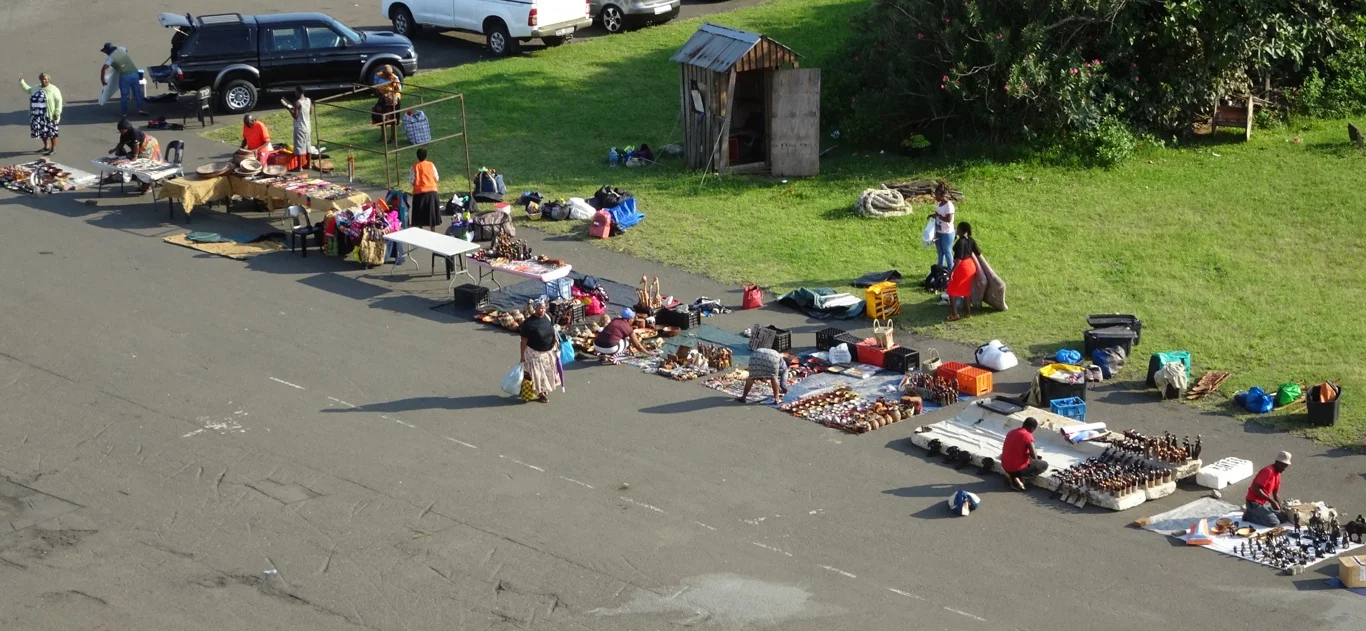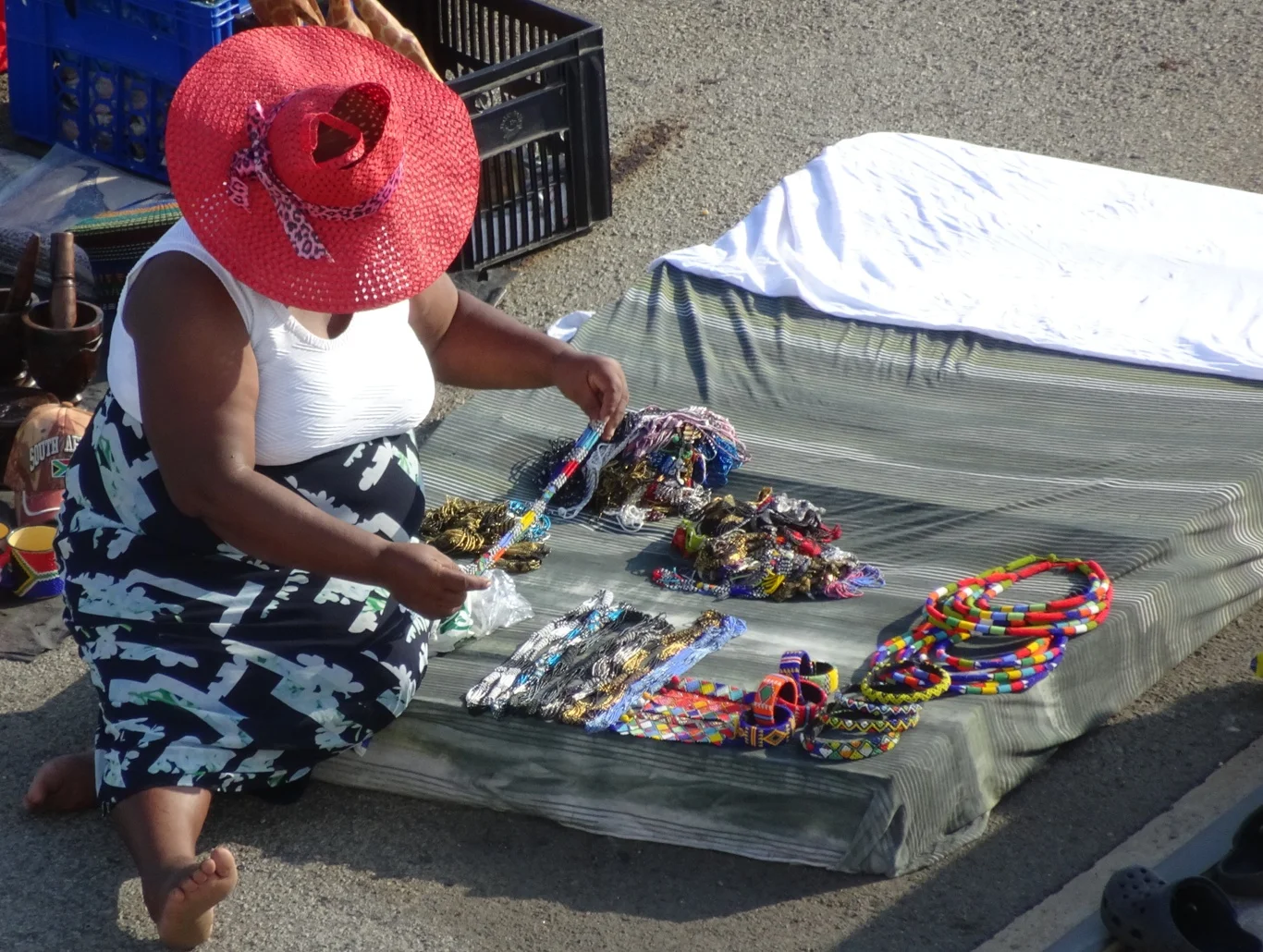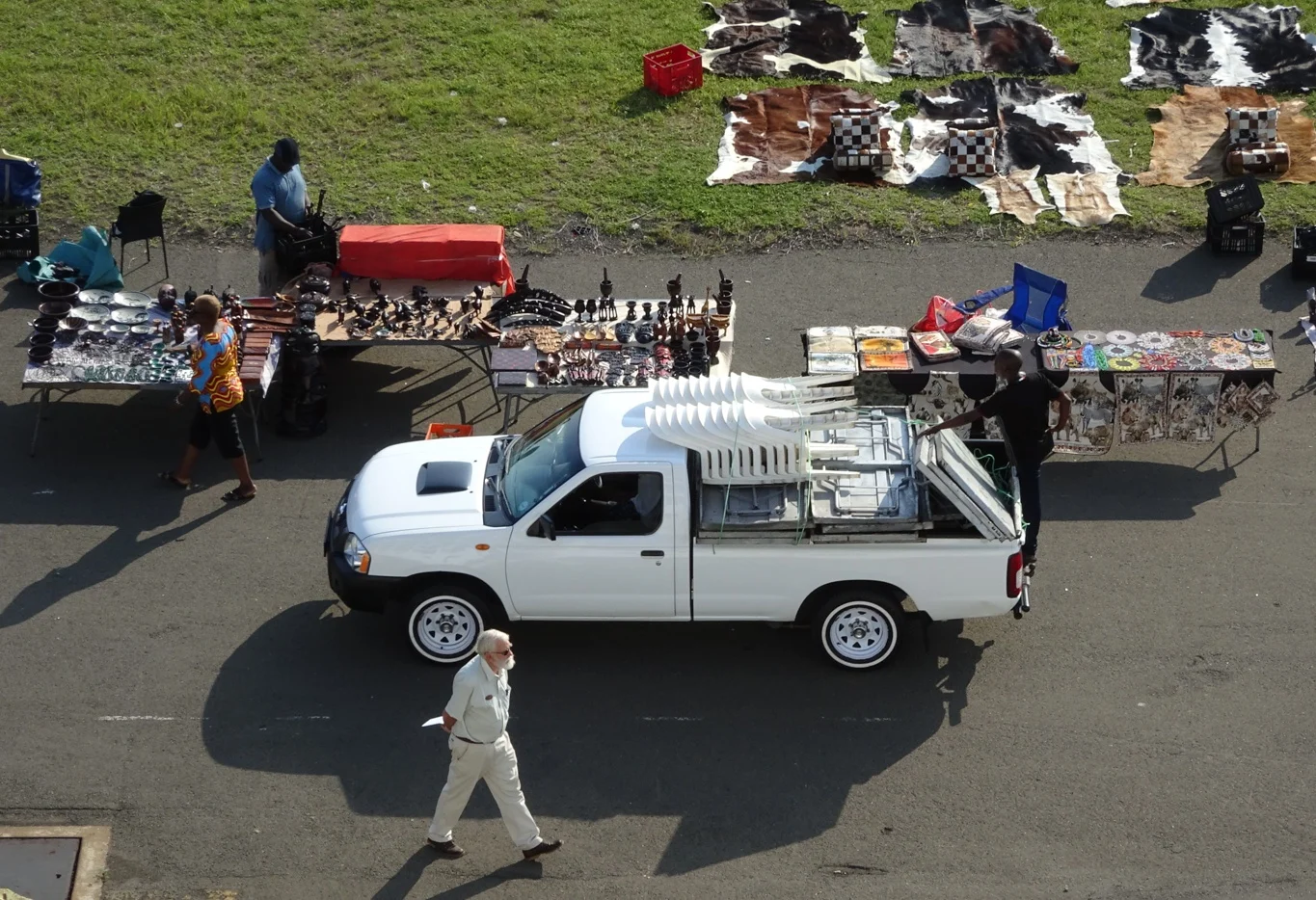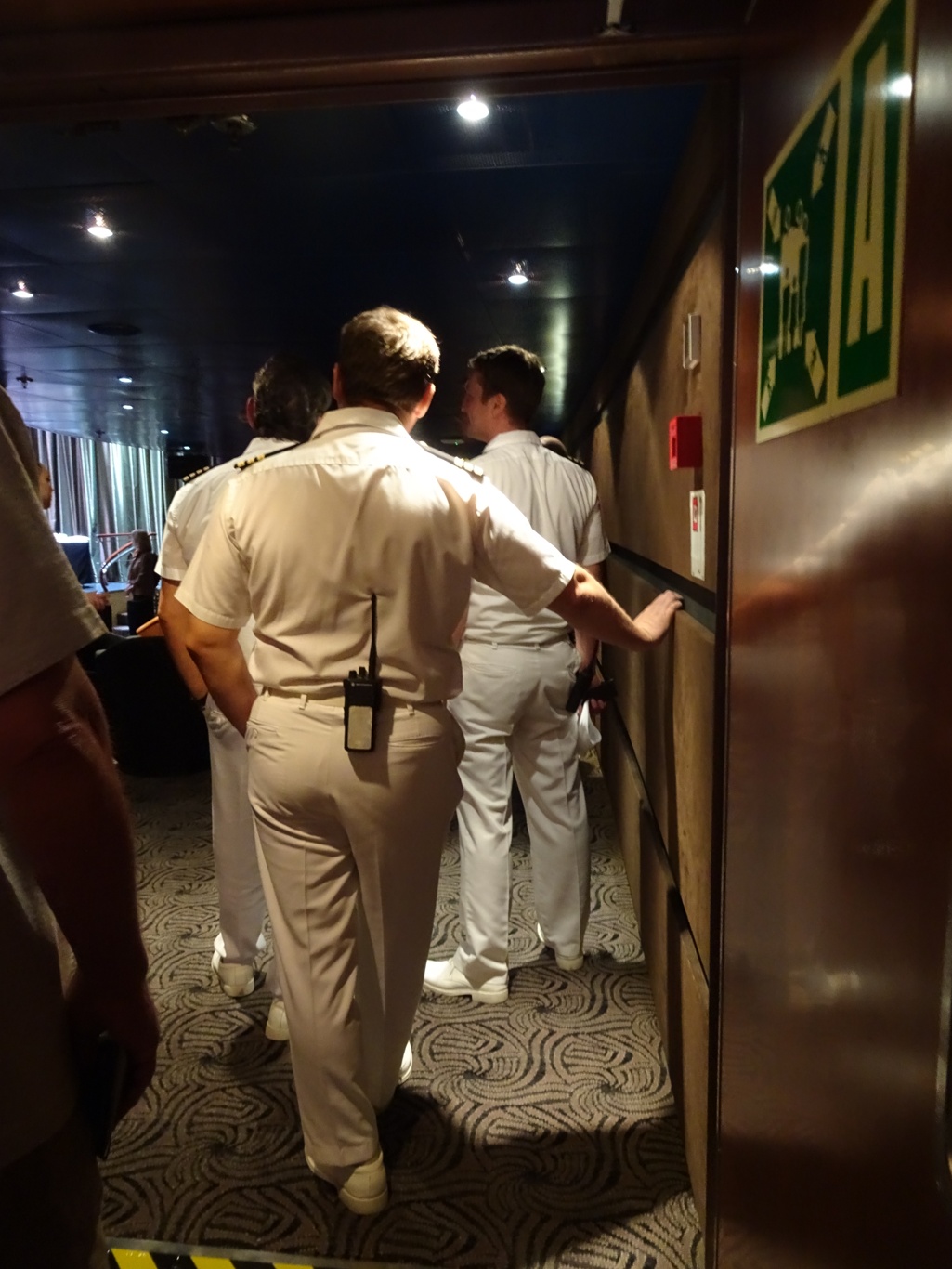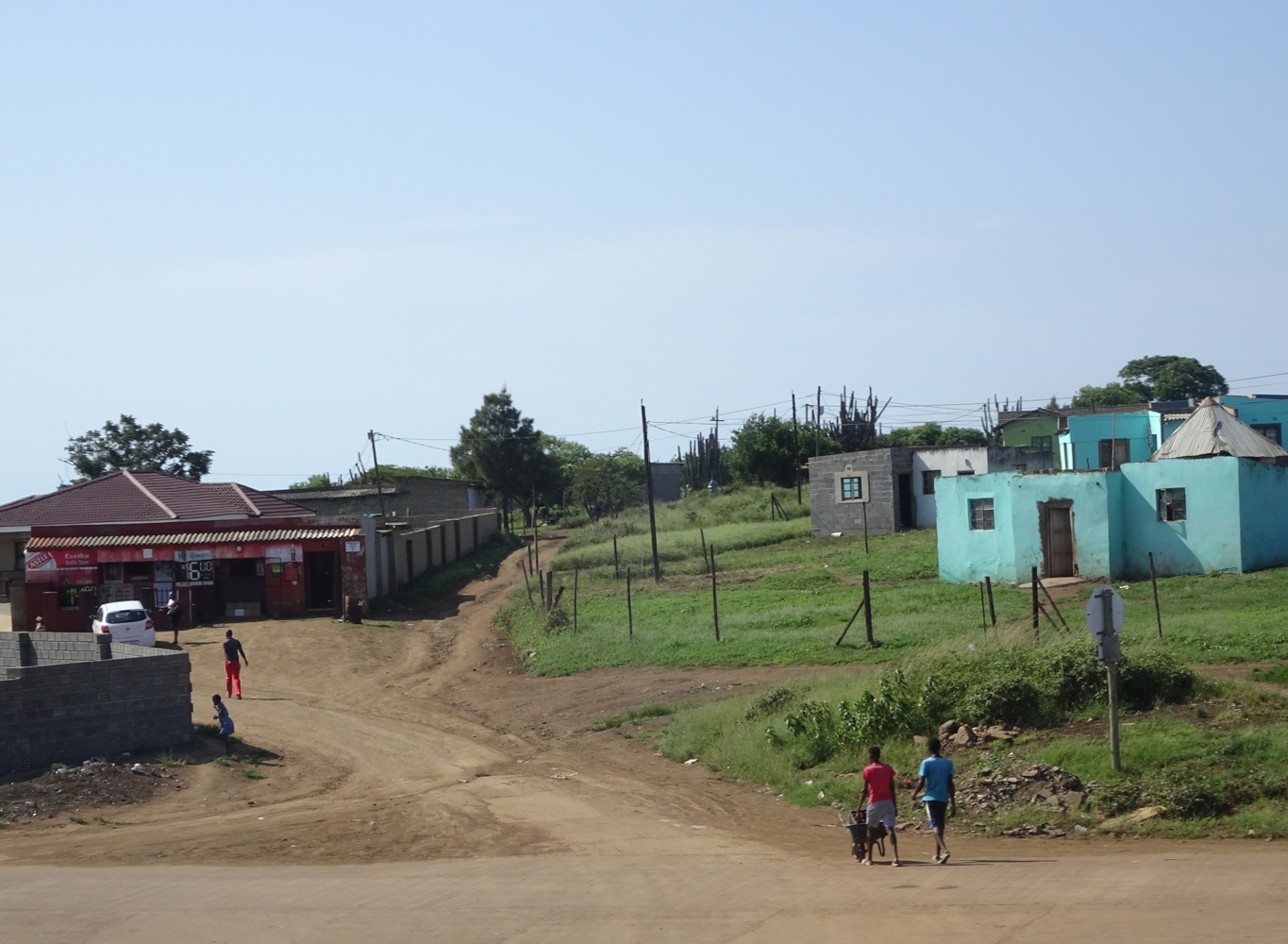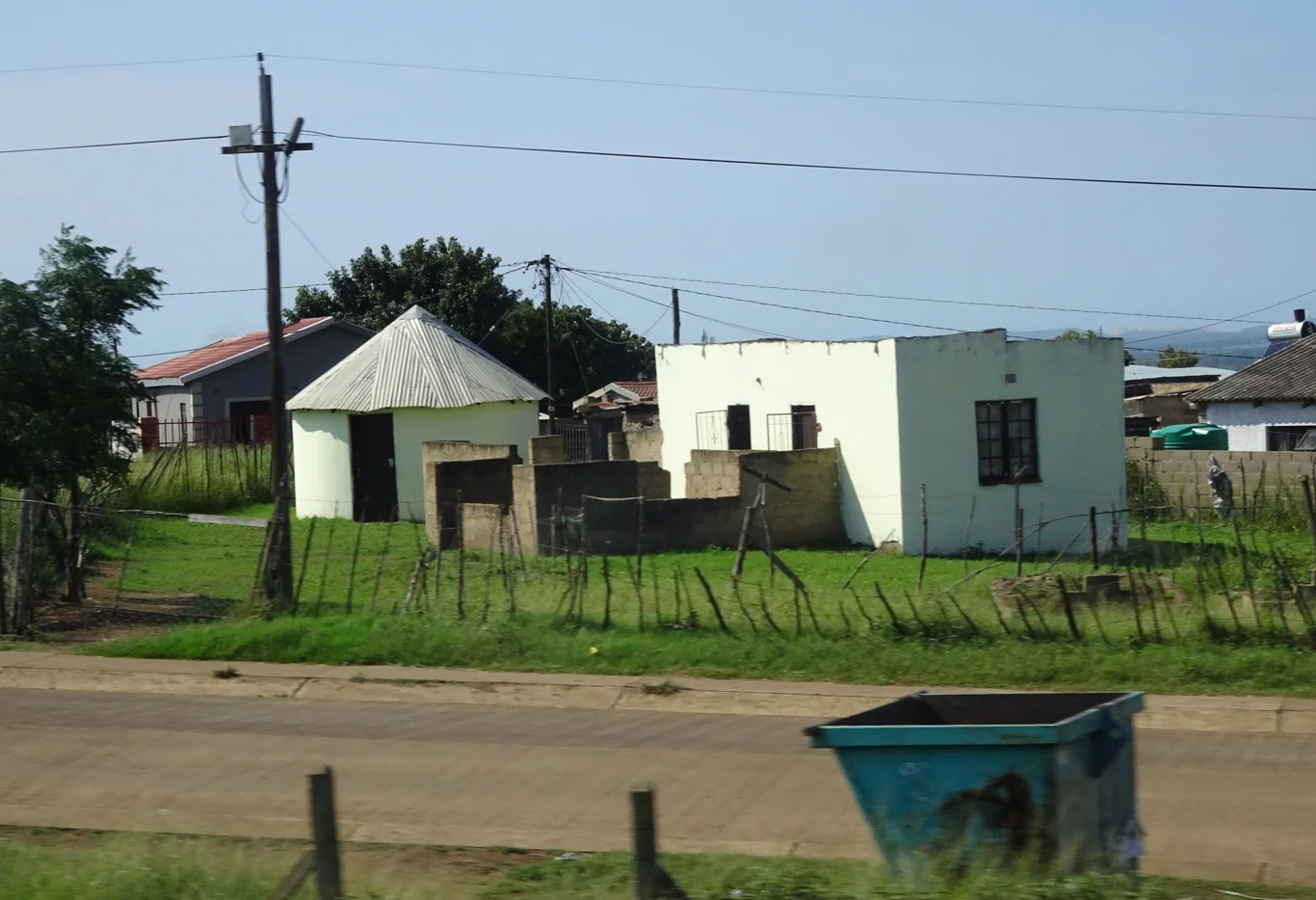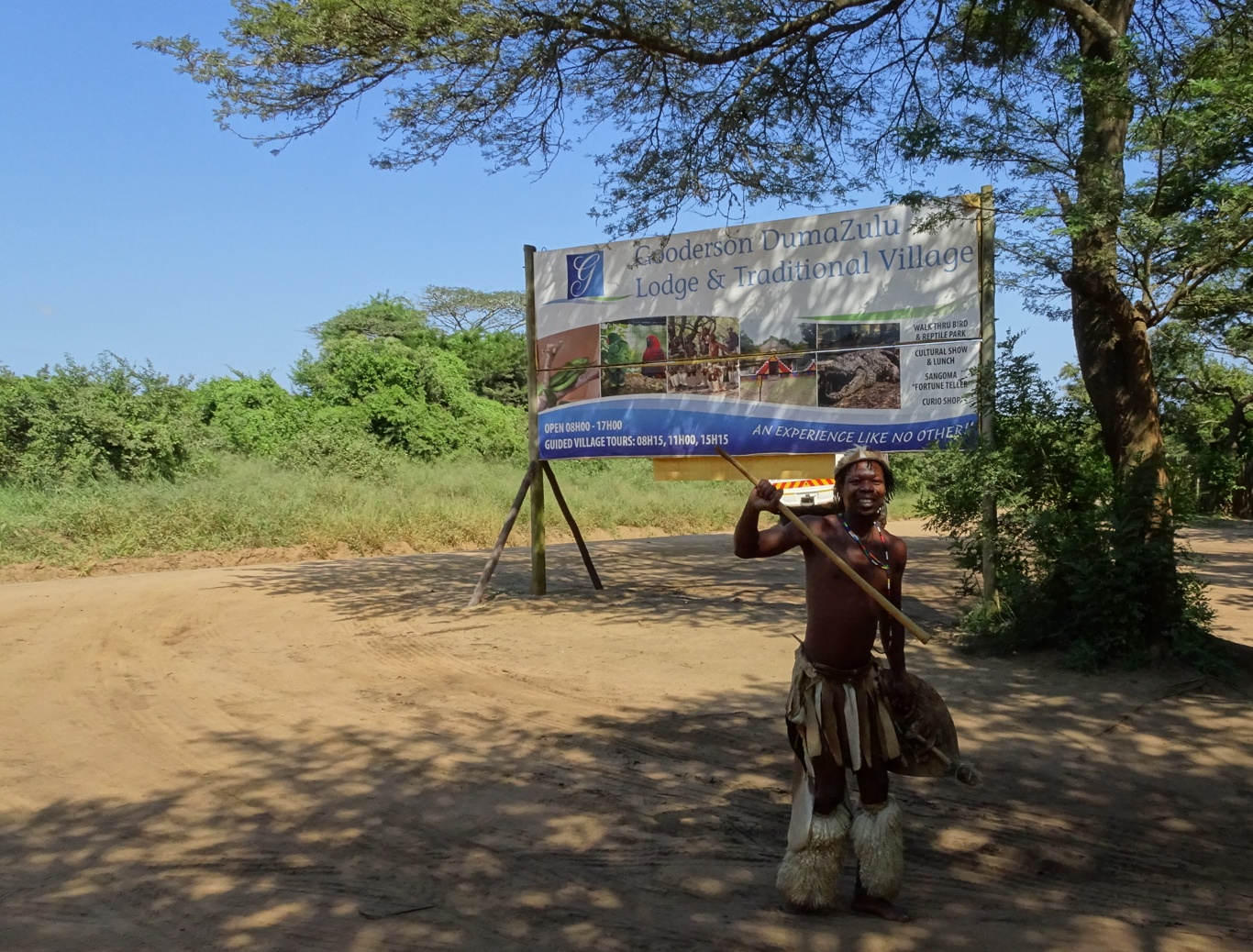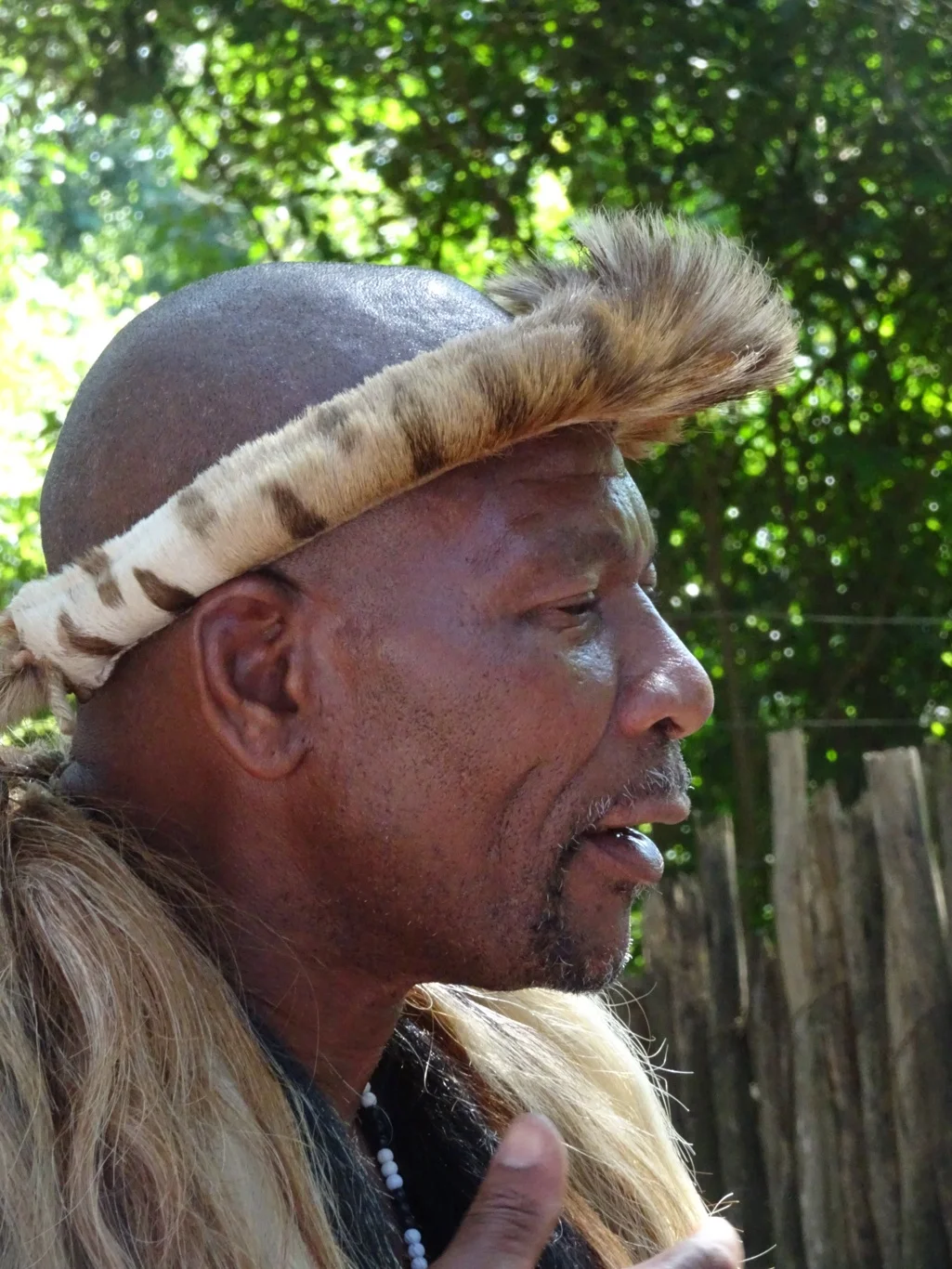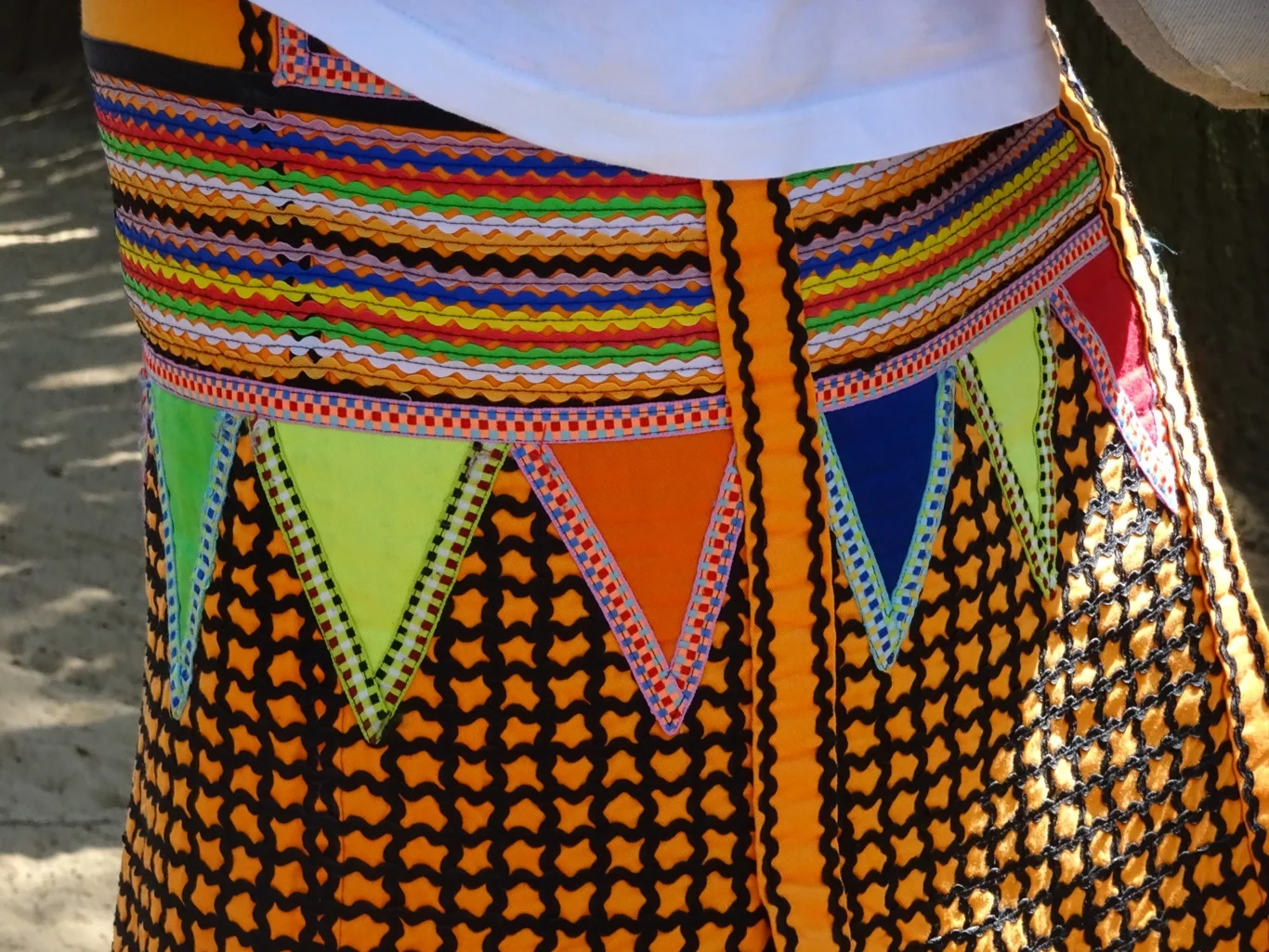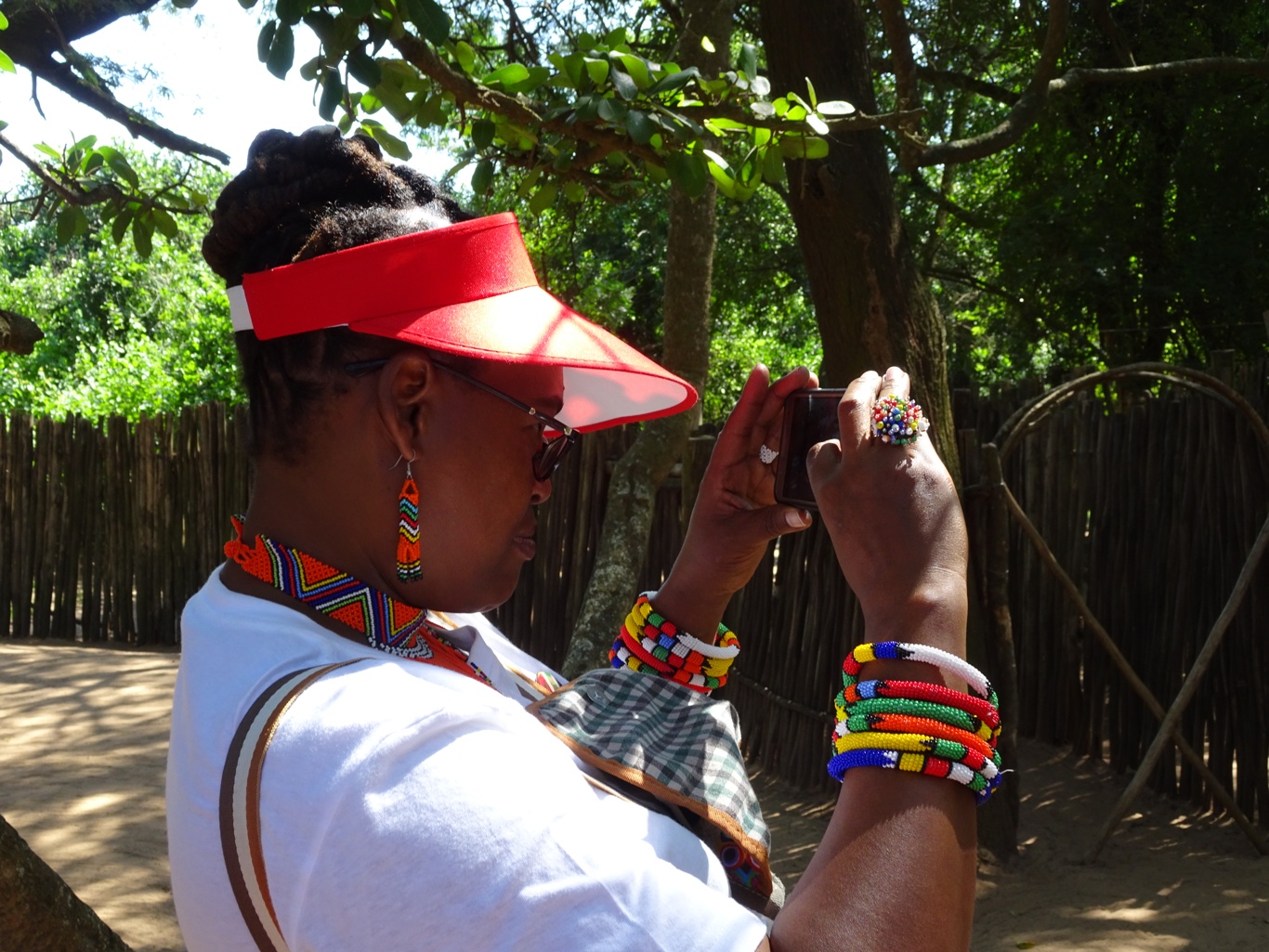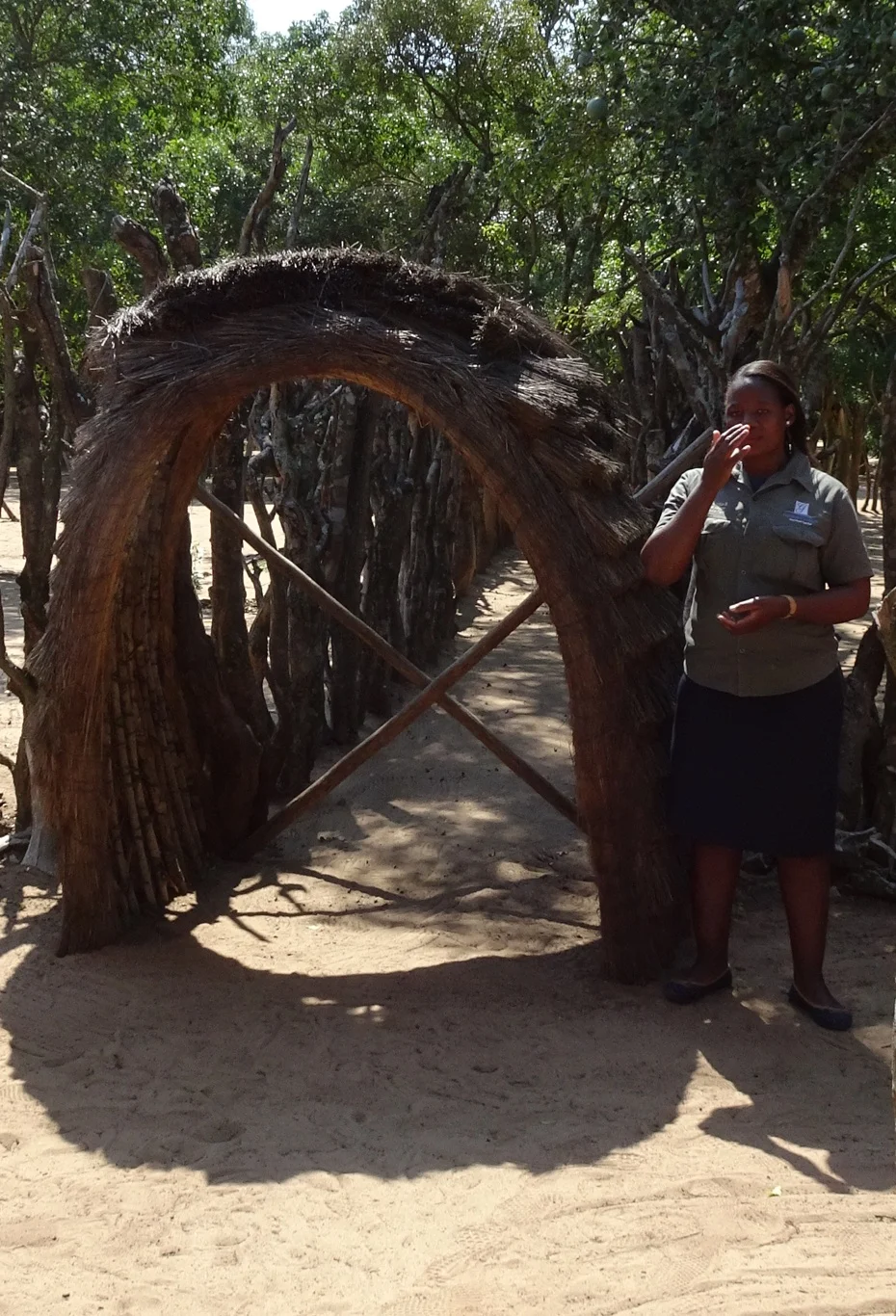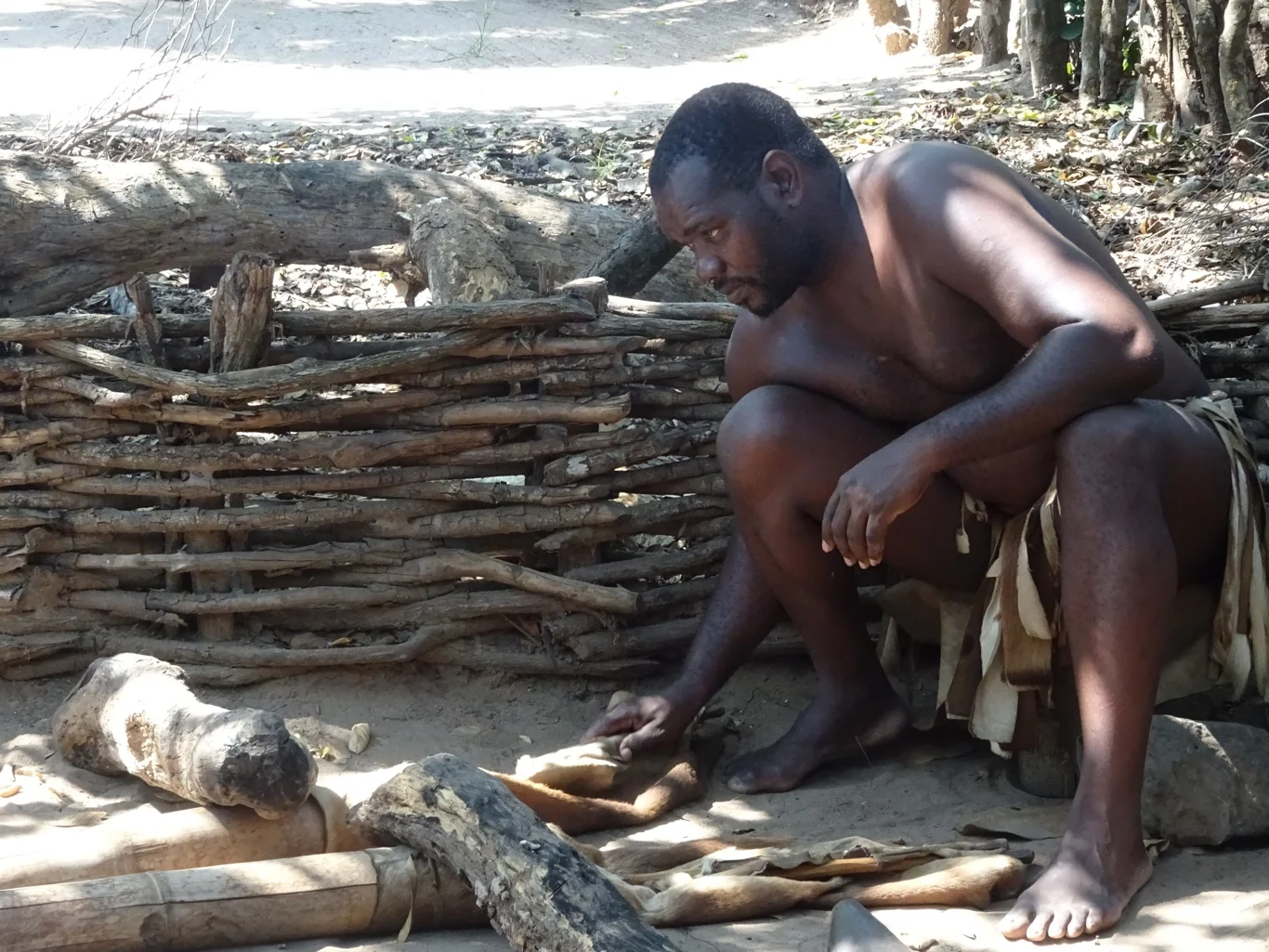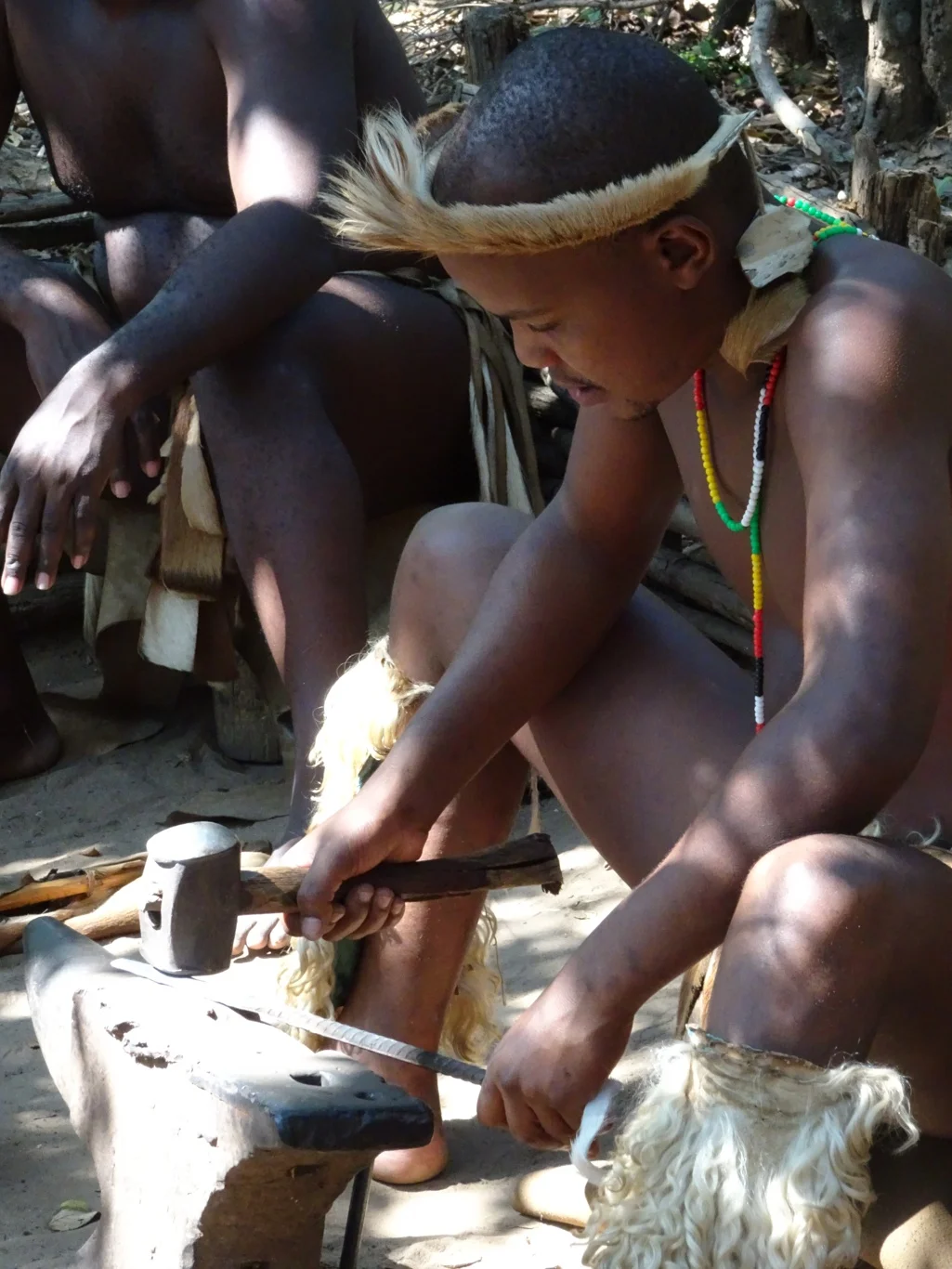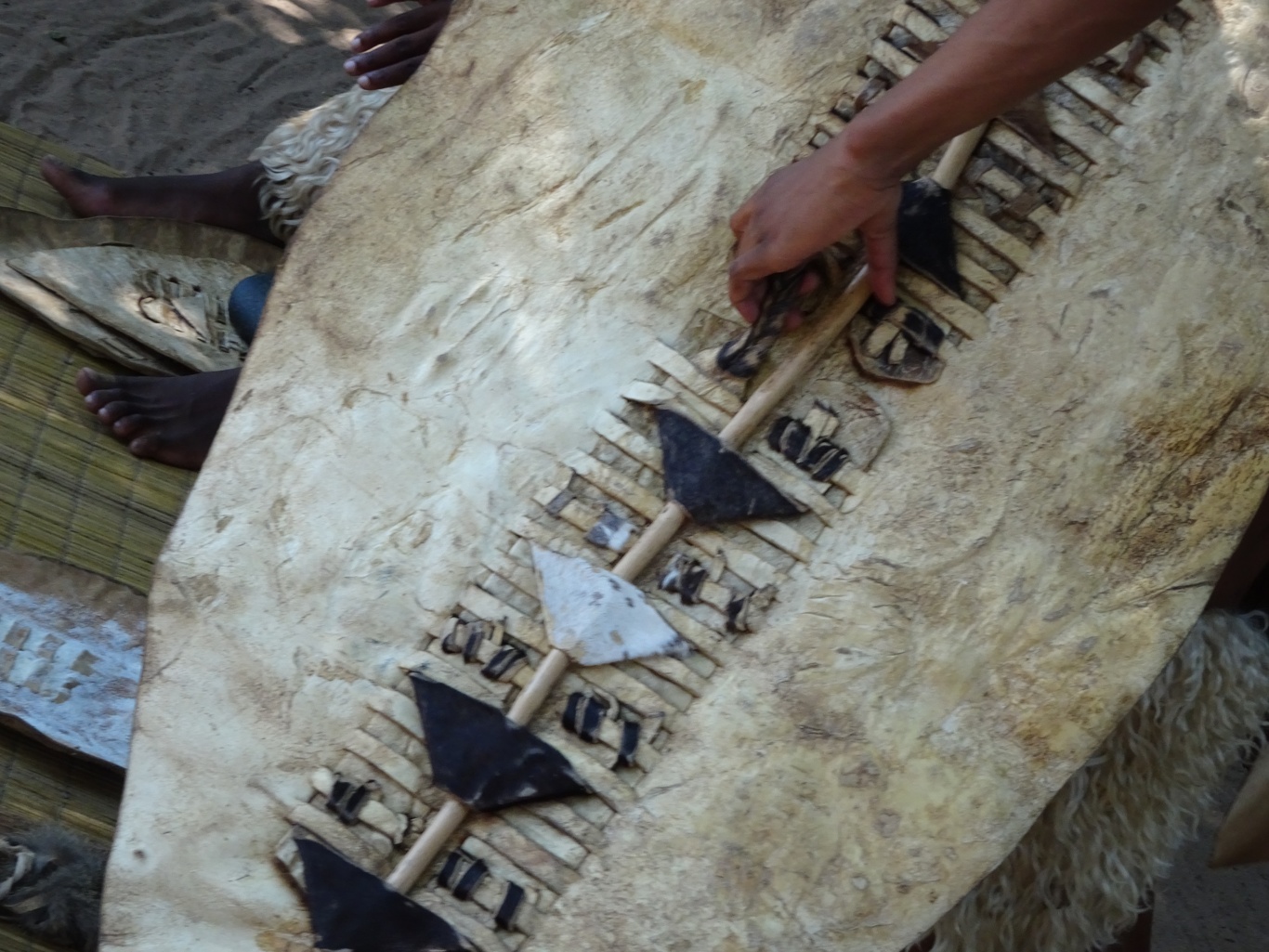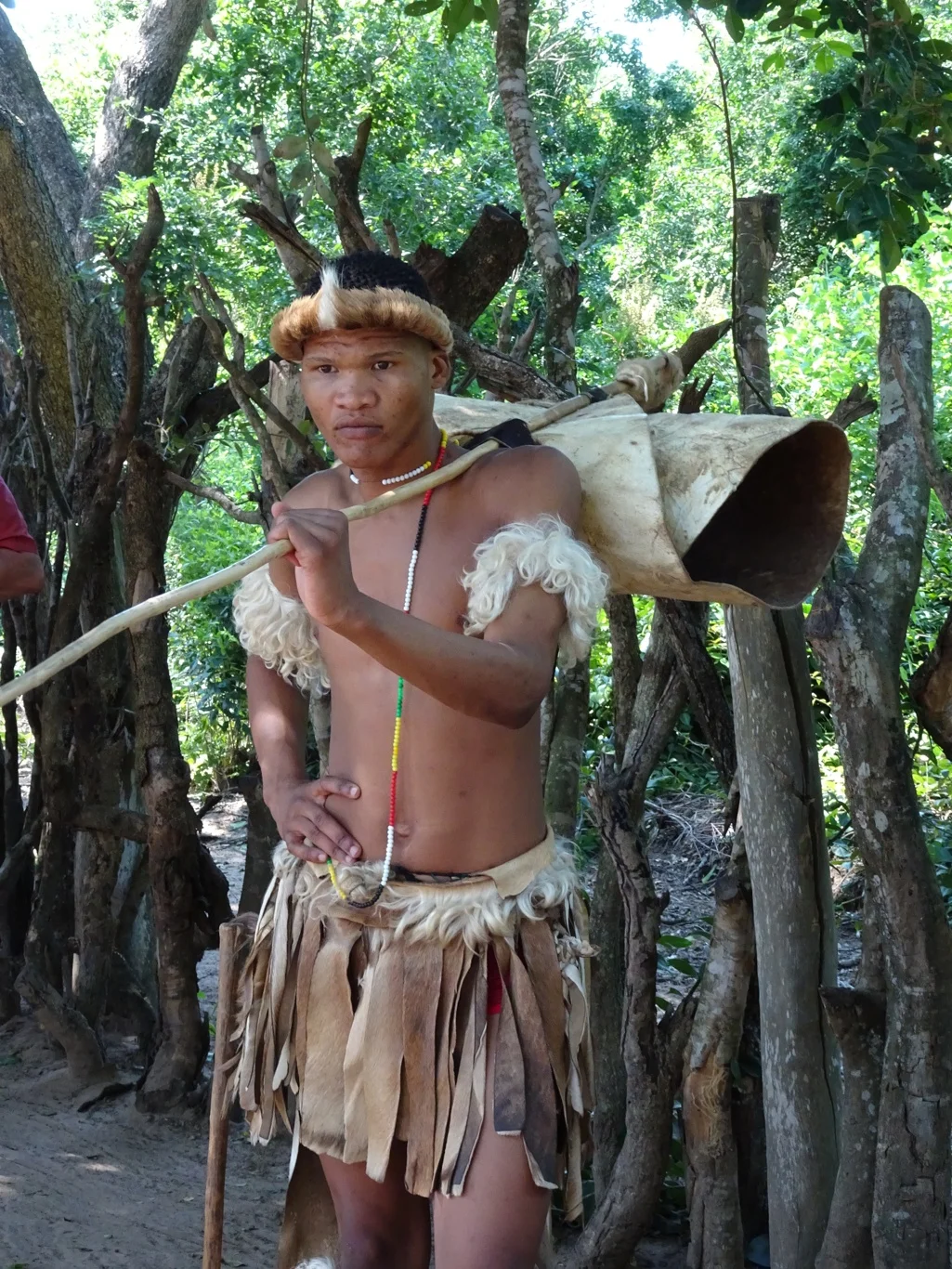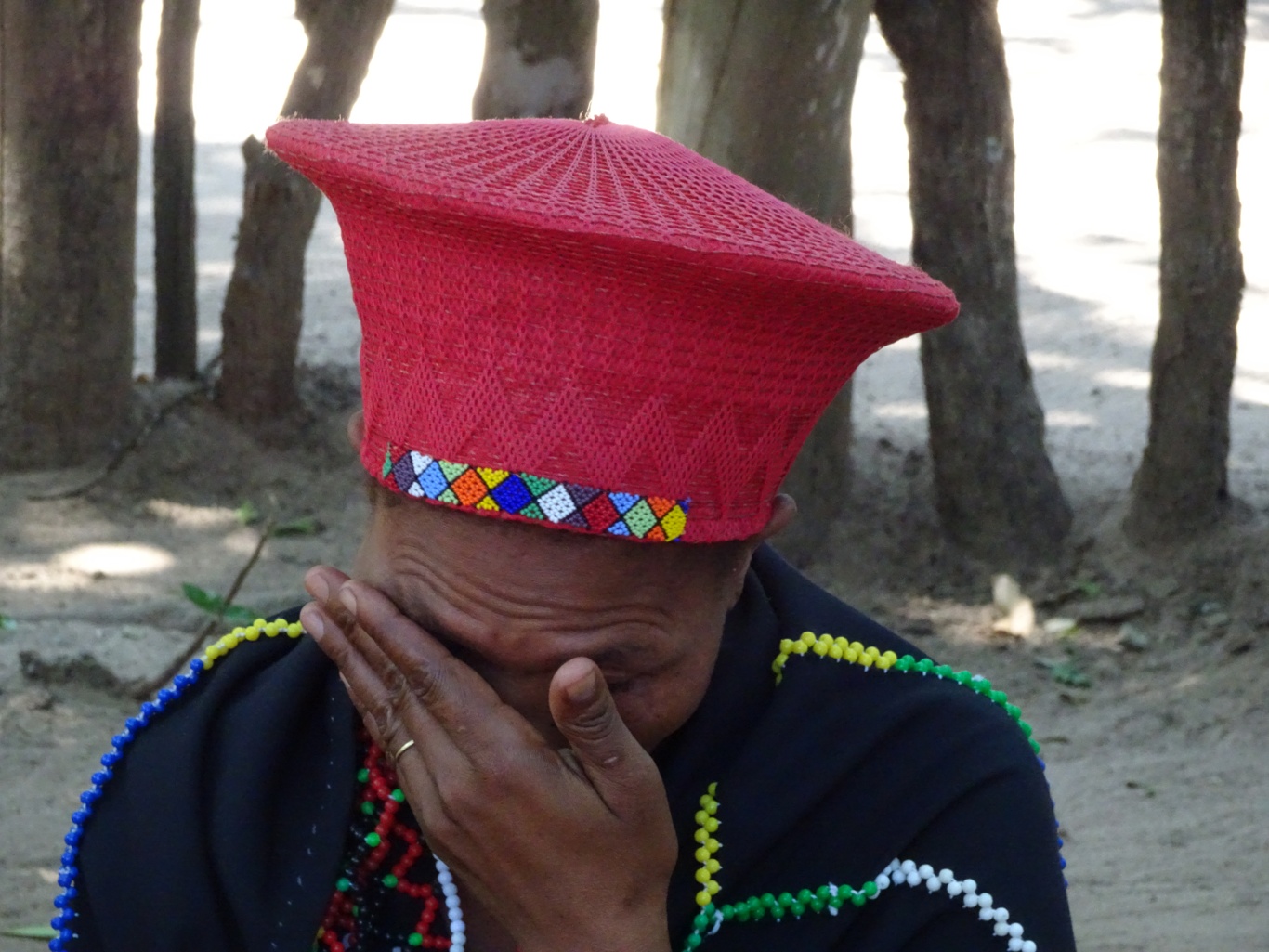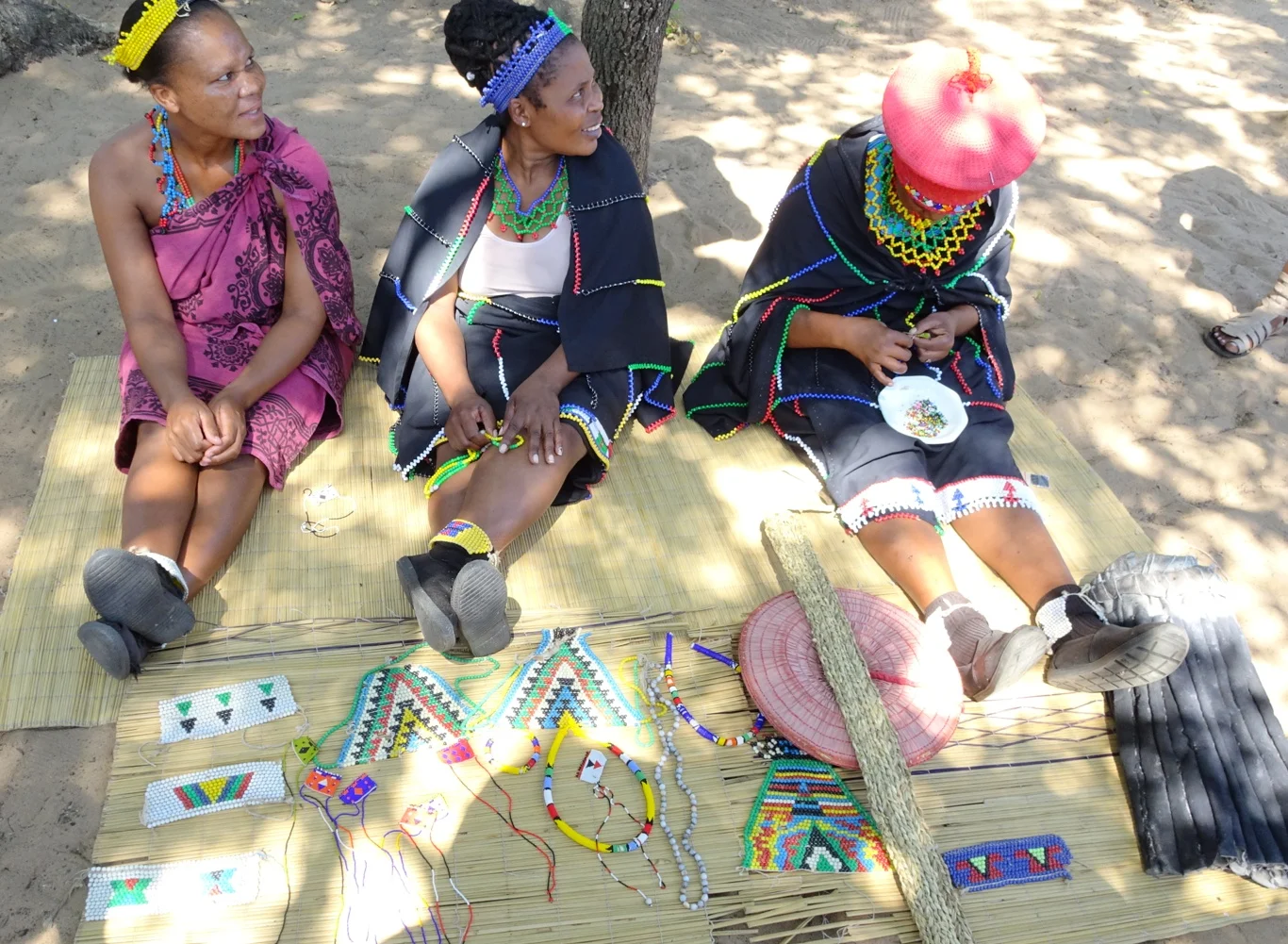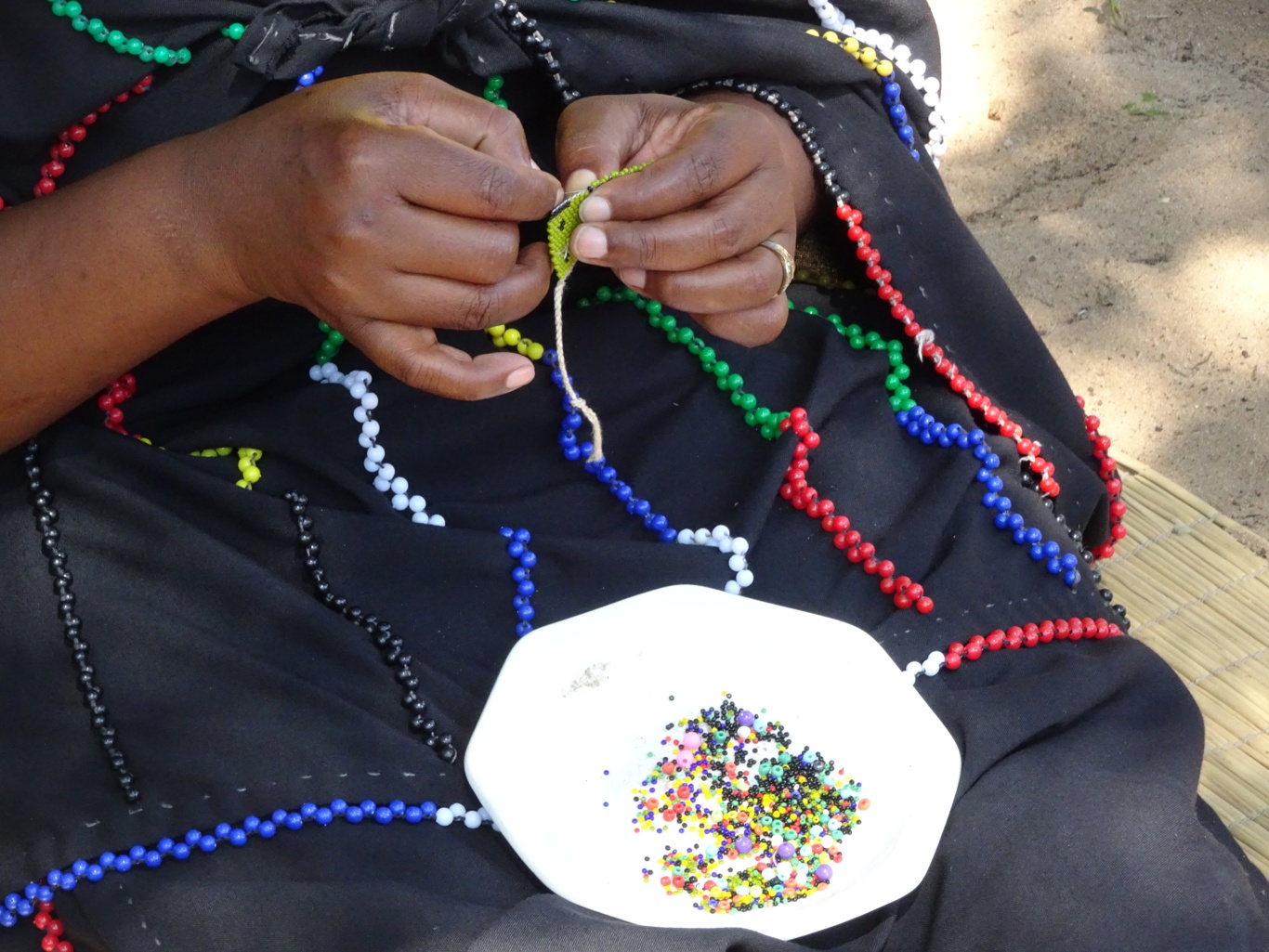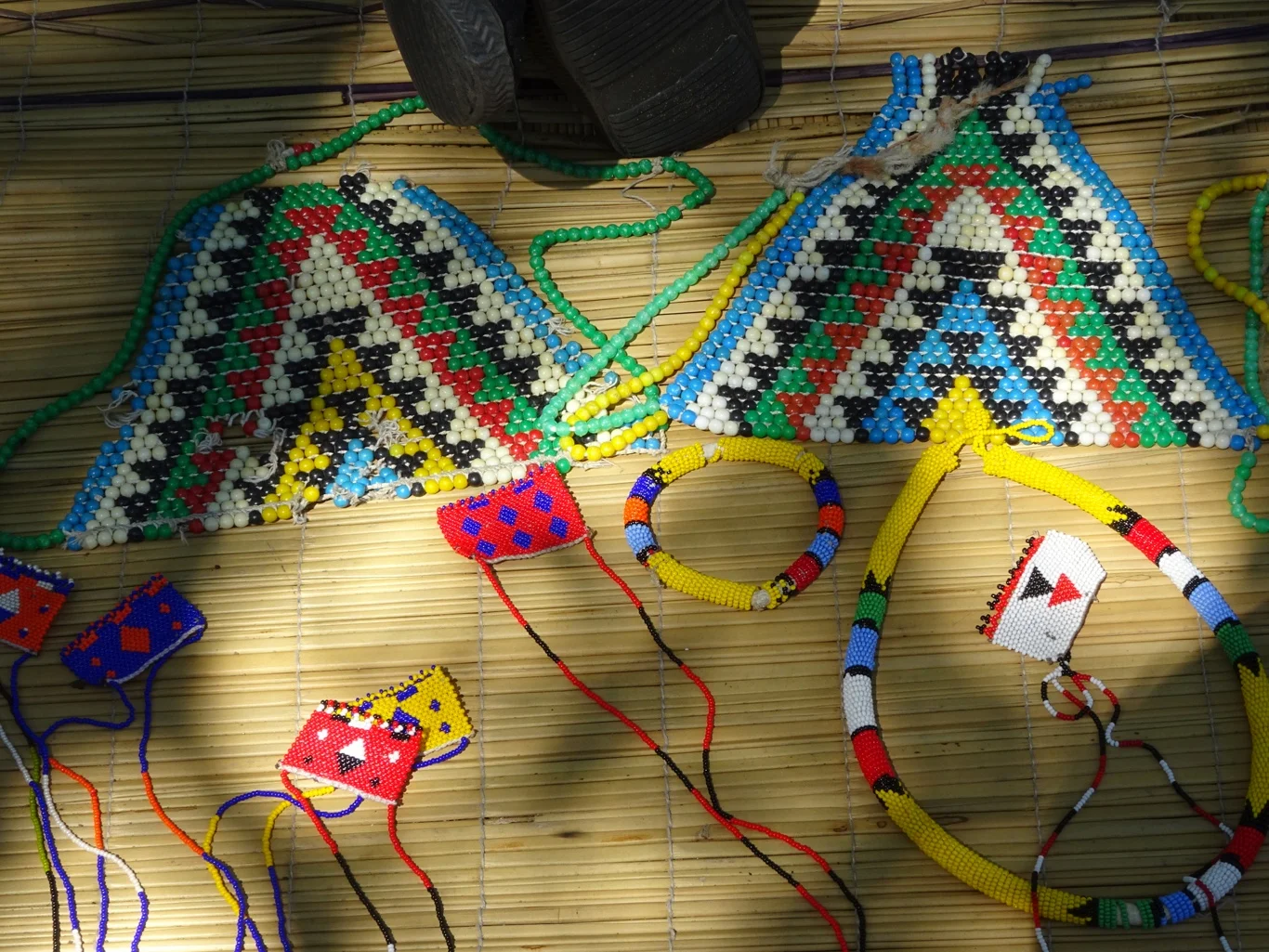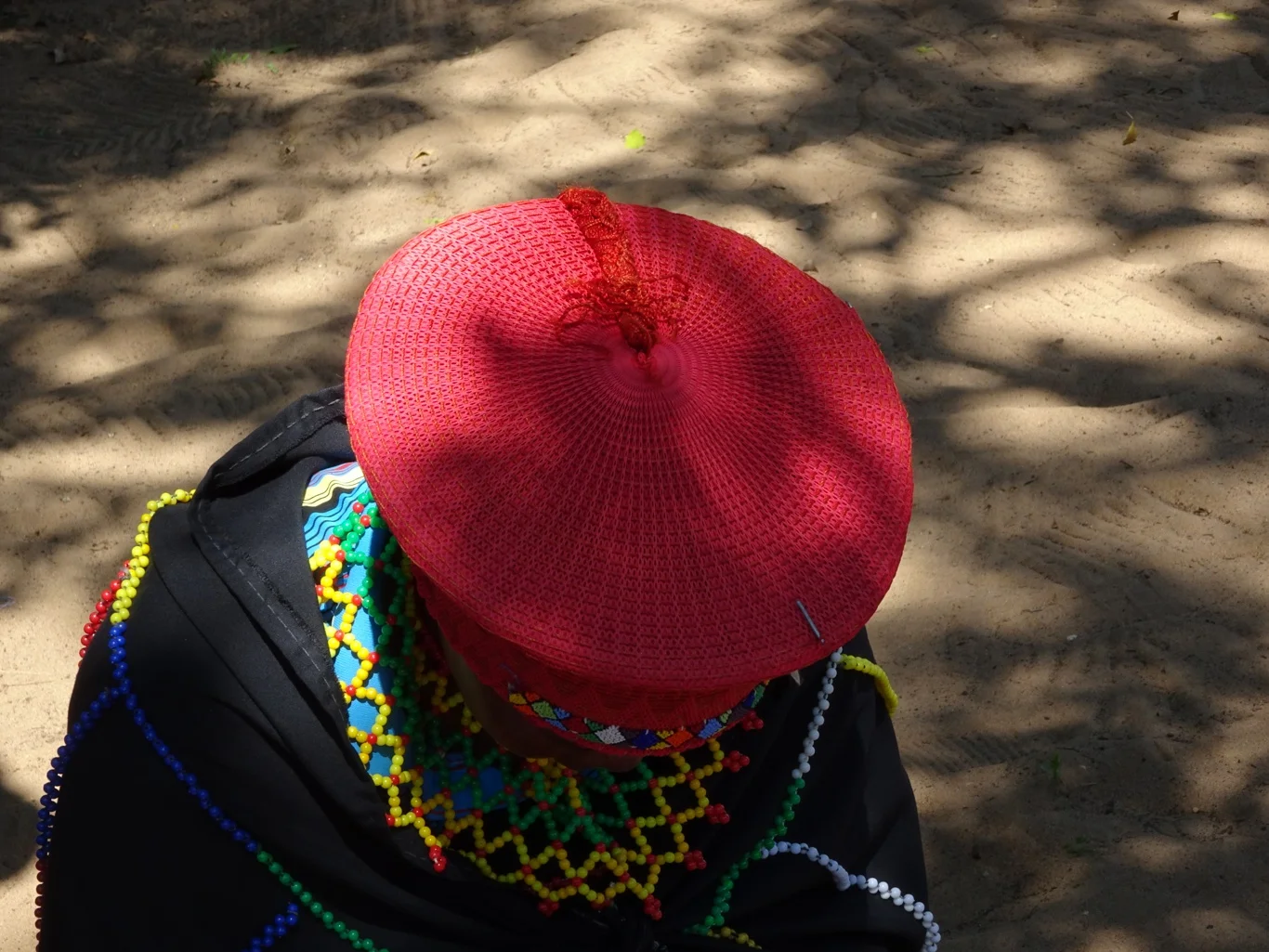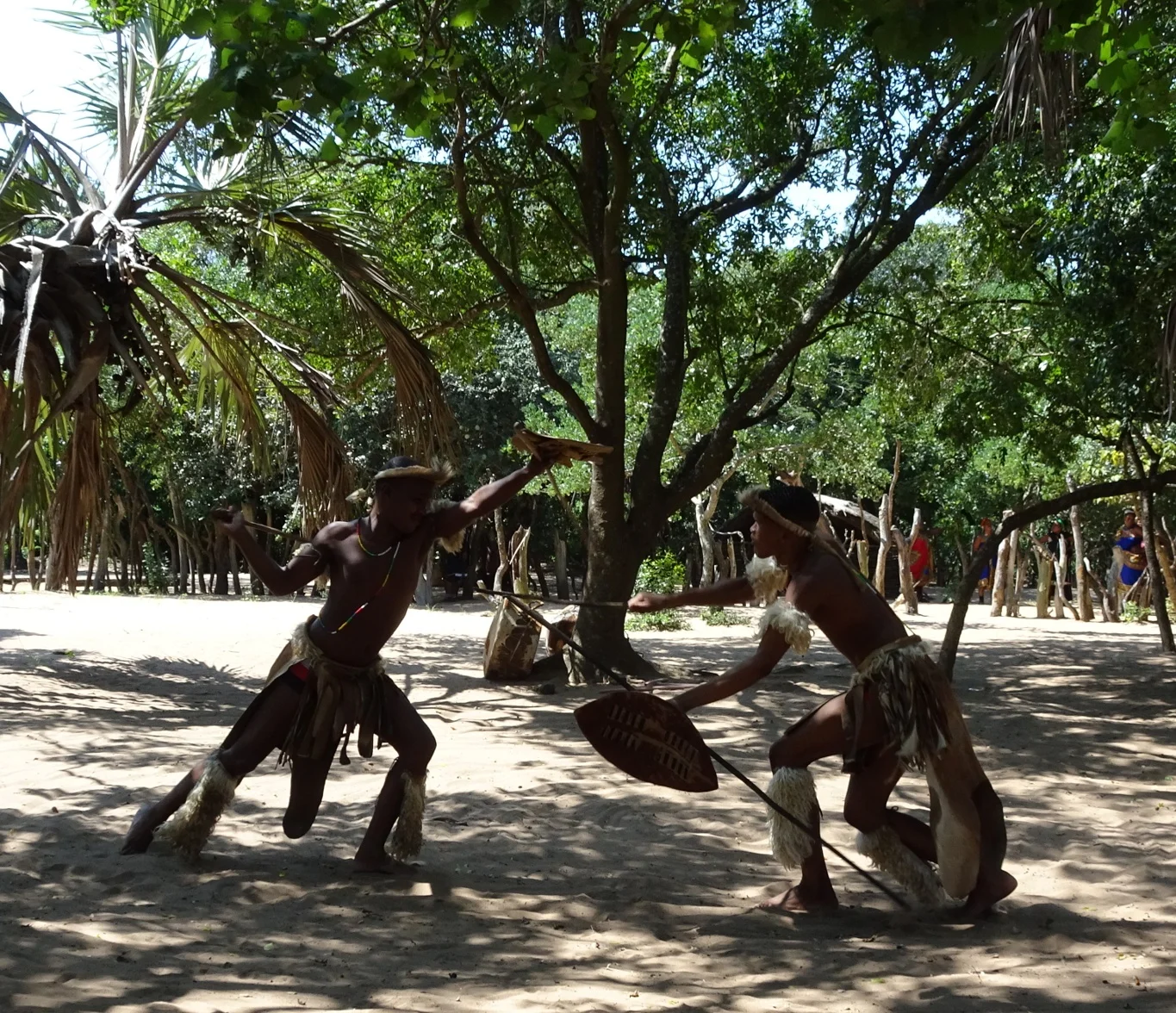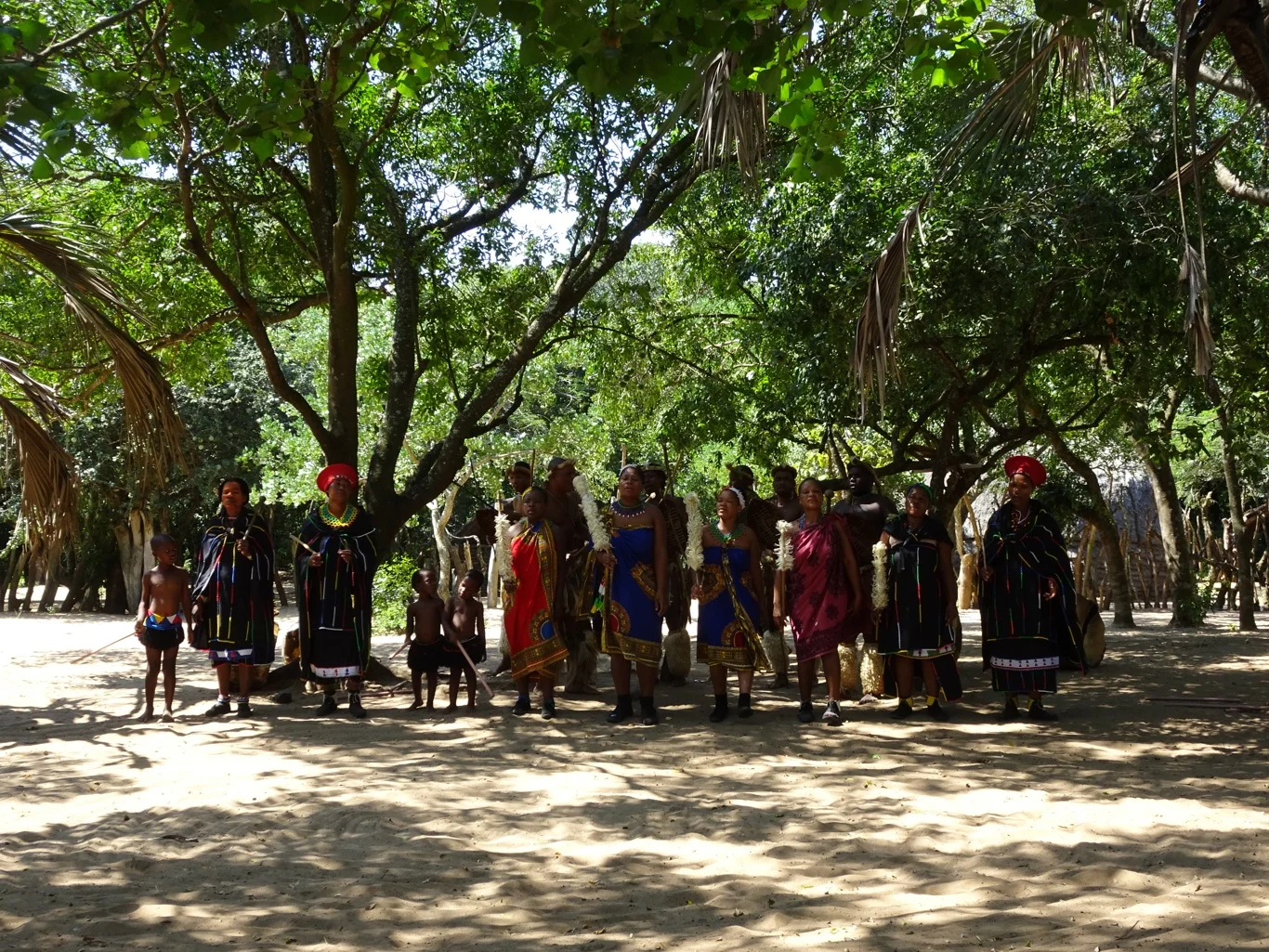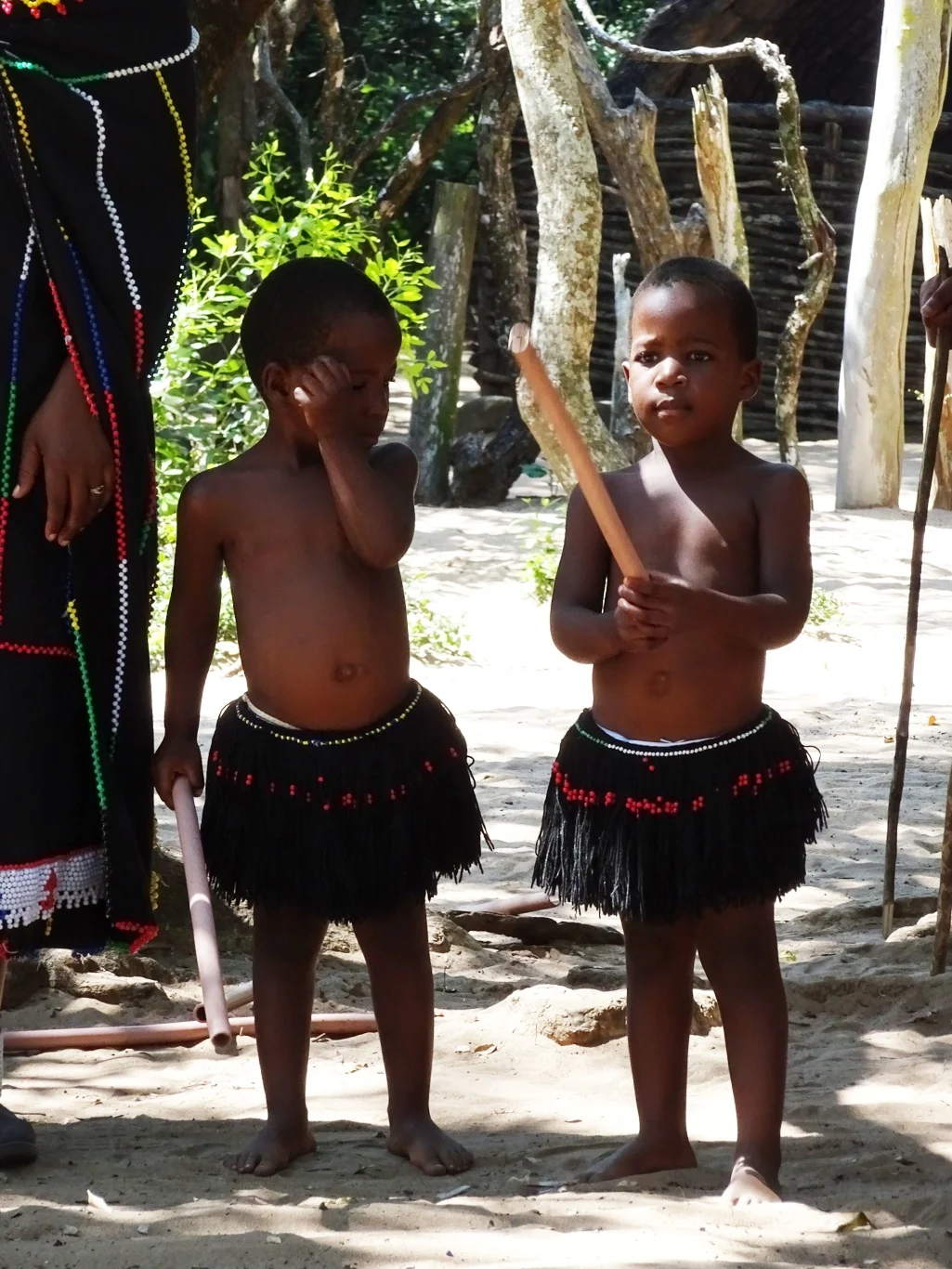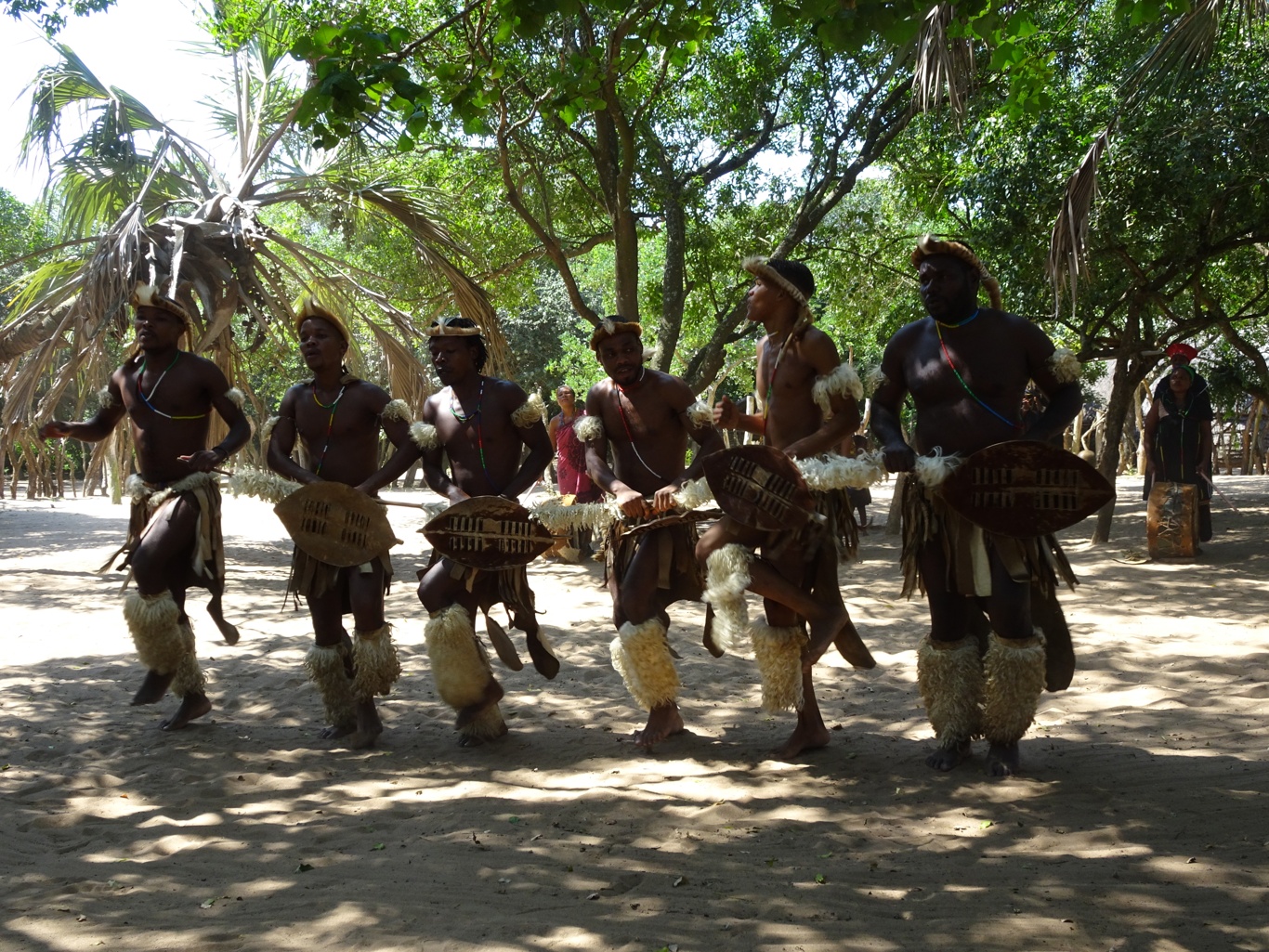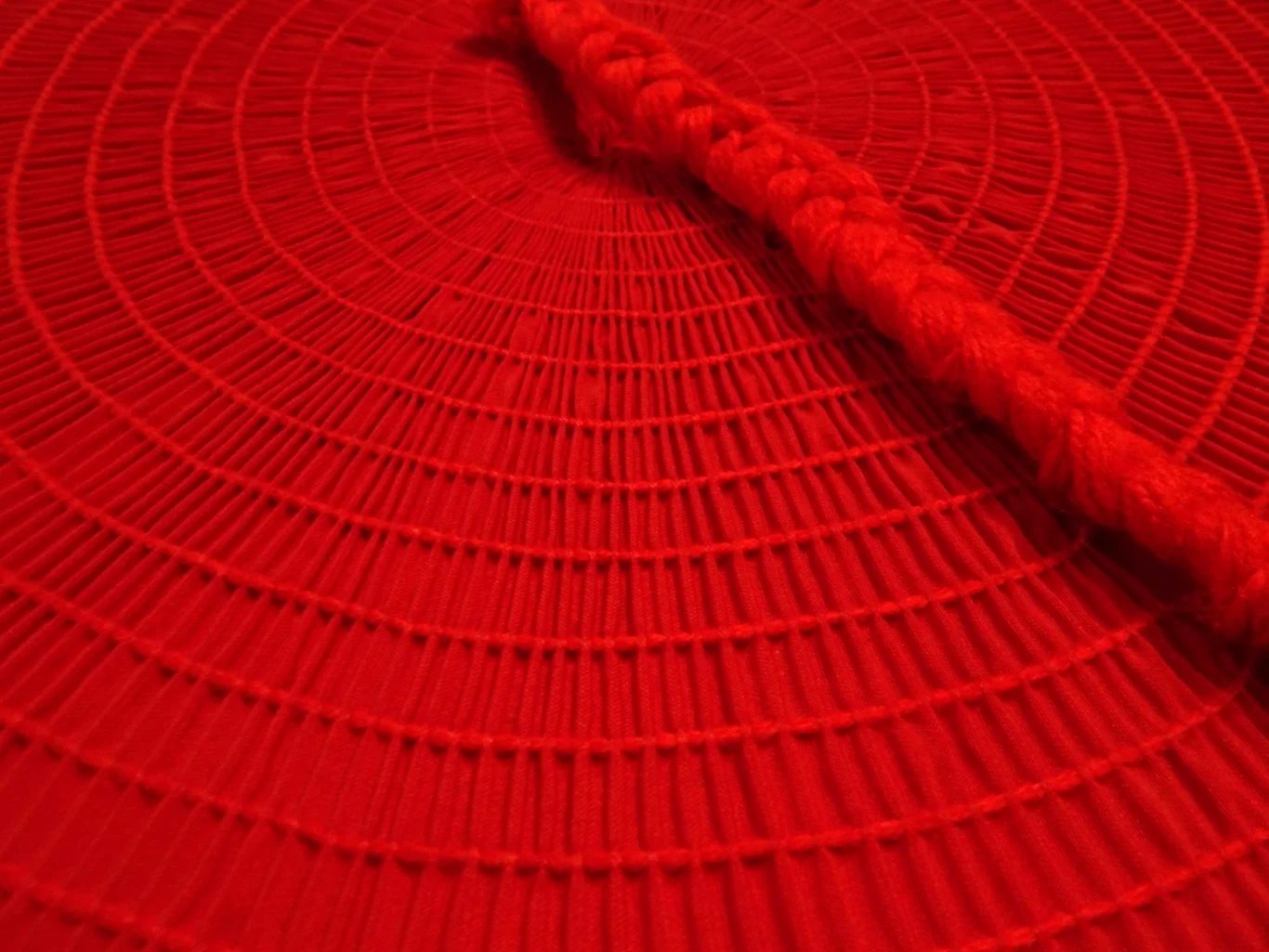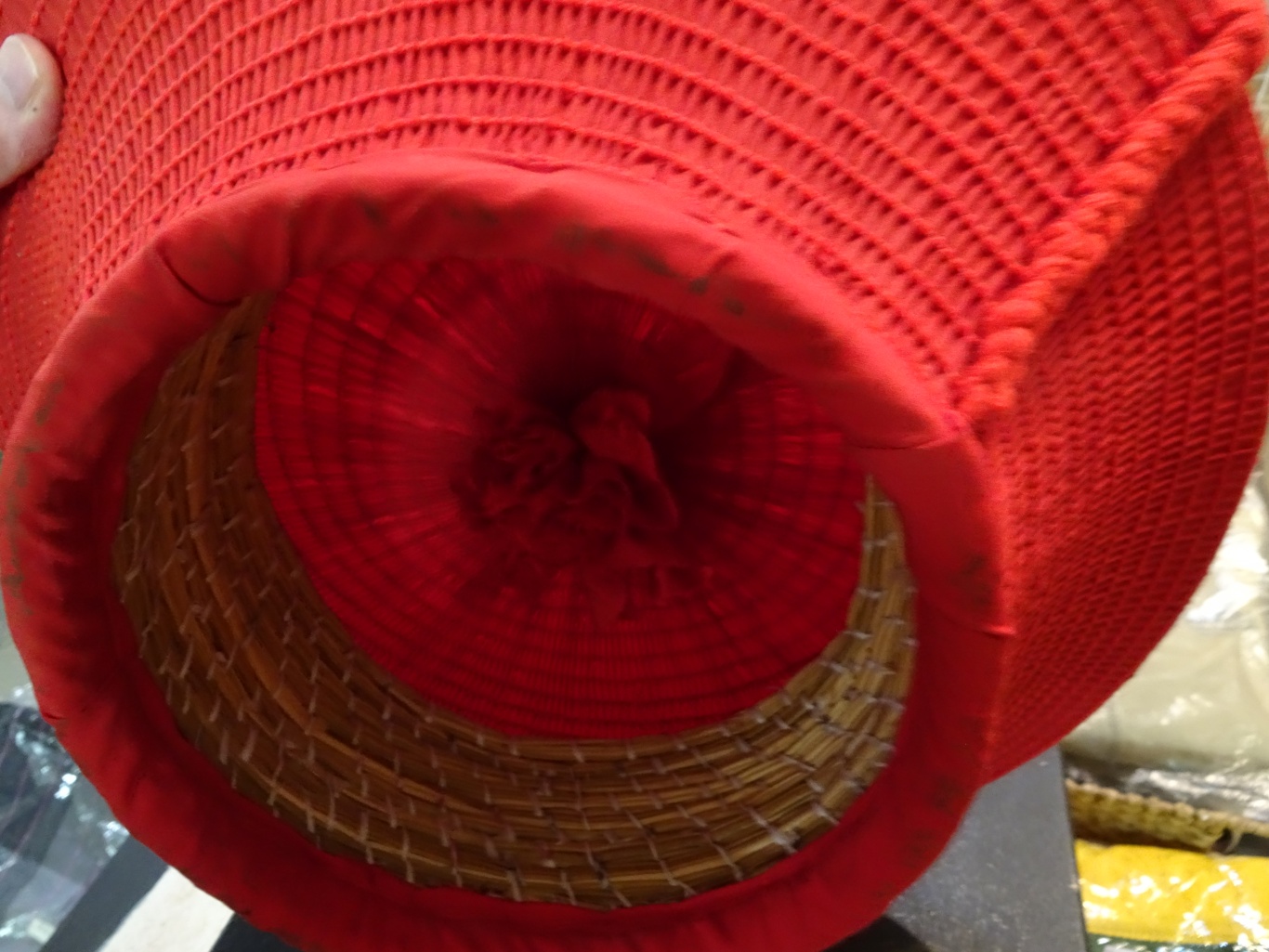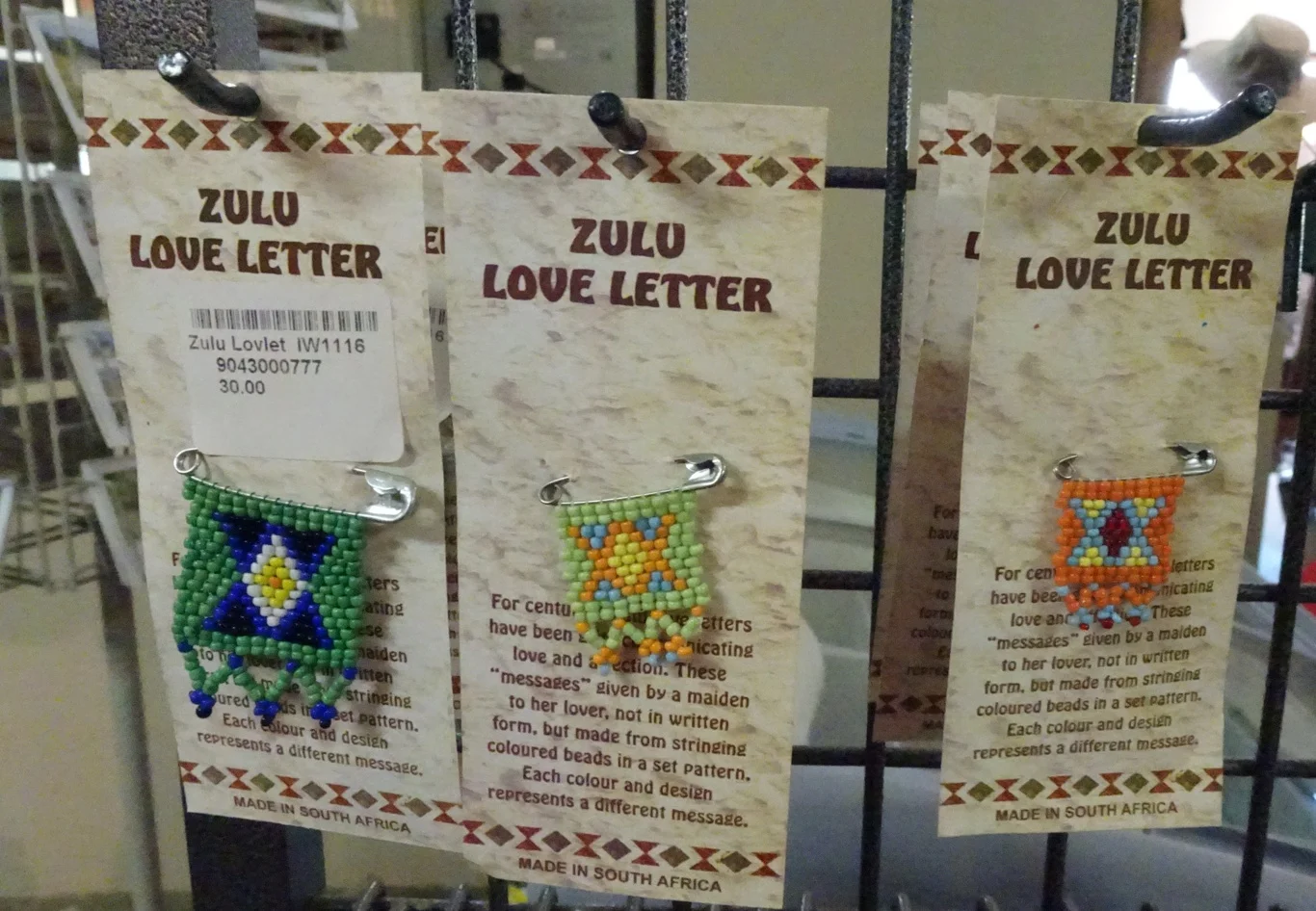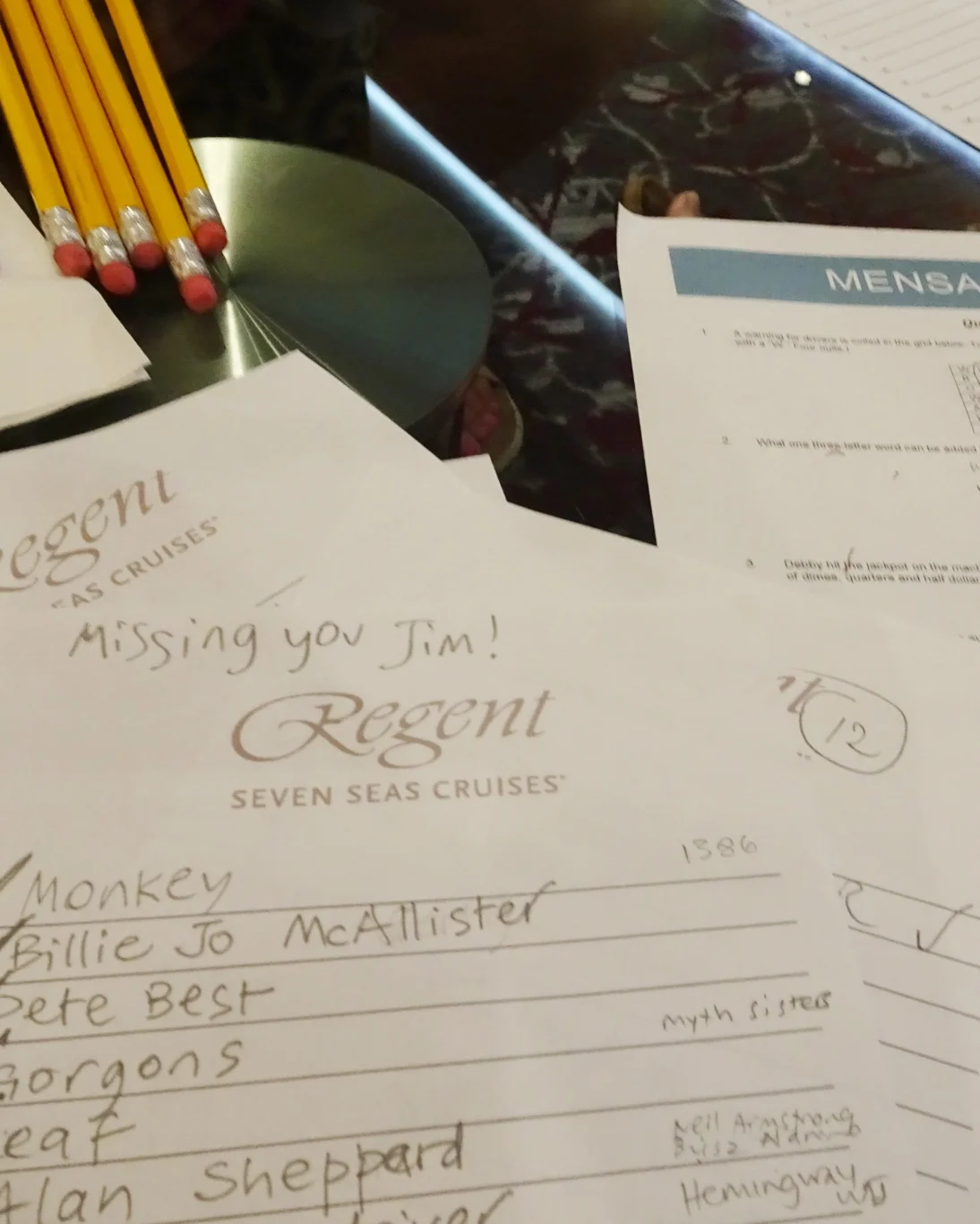Sawubona!
A first glimpse of Africa greeted us when we opened the curtains this morning, as we arrived in Richards Bay, in the KwaZulu Natal province of South Africa.
As we inched into place alongside, we watched a market being set up on the pier.
I watched one lady carefully arrange her jewellery on a cloth-covered wooden pallet, sensibly wearing a hat in the already hot sunshine.
I didn't hear the words she spoke as, having arranged everything so neatly on the pallet, a truck came along and distributed tables and chairs for the sellers. When we returned this afternoon, she was sitting behind a table with all her jewellery there on the top of it.
Before we could do anything, we had to visit the South African Immigration people in the theatre for a passport check - even the Captain and his senior team were in line, quite rightly, just in front of us!
Everything in order, we were soon out on the open road, driving towards the Dumazulu Cultural Village - possibly not the most authentic Zulu experience but, for us beginners, it seemed like a great place to start.
Once out of Richards Bay, we caught a glimpse of rural life here in Kwazulu Natal and as we drove, our guide Bongy explained a few details, including the tradition for polygamy here.
She explained how, even modern homes have a version of the traditional "beehive hut" alongside, which the man would build for each of his wives - or did he build it for himself to escape them?
We drove through a broad, open landscape and past an ostrich farm, then on through eucalyptus forests, planted to supply the paper industry here. We learned that Richards Bay is a growing industrial city and a busy port, which made it all the more surprising to learn that there's a 40% unemployment here.
As we neared the cultural centre, Bongy also taught us a few words of Zulu which was just as well, for as we got off the coach, we were greeted by a (not very fierce) warrior who was keen to test each of us with a greeting.
A further test followed as the chief (?) shook hands with each of us and asked for our name, expecting an answer in Zulu.
I wasn't concentrating, because I was far too interested in Bongy's skirt...
not to mention her jewellery! But I just about got away with it - at least, I wasn't asked to repeat it over until I got it right!
Having introduced ourselves and announced our presence by beating a drum, we were invited into the village. But the gateway was closed...we had to shout a few more (different) words of greeting and then someone kindly came and allowed us inside.
Here was a collection of traditionally built beehive huts, surrounded by a wooden fence and during the next hour or so, we visited several spots here and there to see how a variety of traditional zulu skills were done.
We began with the swordmaking. This chap was using a couple of animal skin bellows to fan the flames of a makeshift furnace. We'd learned about these Zulu assegai during on board lectures about the Zlu wars during the last couple of days.
His mate hammered the steel and then sharpened it on a stone.
Meanwhile a third young man was making a traditional Zulu shield from cowskin.
Having demonstrated how the shield could be held rigid by using a stick, he went on to show how the Zulus would use it to carry their belongings as they moved around alwasy barefoot, for shoes were too heavy for fleet footed warriors.
Sad to say, the women at the next post couldn't have looked more bored. They were showing us how the pots were made and how the basket lids were used to signal that there was beer available or if it was time to go home. One gamely showed us how she could carry a large pot on her head, but really, they would rather have been somewhere else - or at least, they gave that impression.
But I'm assuming this is their job, that they are employed by the owners of the centre to dress and re-enact whatever it is they are doing and as such, it's a shame they didn't show more enthusiasm.
The baskets they were showing were pretty nice and the pots, made using the coiling method were remarkably fine. The rings are used to balance the pot on their head for carrying and Bongy went into great detail about the significance of the circle in Zulu culture.
You can guess what caught my eye though, can't you? Married women wear this hat - or at least, they do now. In earlier days, their hair would have been plaited and waxed into this same shape during their engagement and they would have worn it so until their husband died, after which their head would have been shaved and they would wear a scarf. The tradition was interesting but I wanted to know, what's it made of? How is it woven? Who did it? I planned to ask Bongy at the first opportunity.
Declining the opportunity to have our fortune told by the bone reader, we moved right along to something altogether more interesting....well, from my point of view at least.
These were the ladies with the beads.
One sat with a bowl of tiny seed beads and was sorting them out as she stitched. I tried to see how she was stitching - was it peyote stitch or brick stitch, I wondered? She was making a kind of flag...a small rectangular panel in lime green and black and as she worked, Bongy explained about the significance of beads in Zulu culture. When a woman decides to accept the approach of a young man, she makes him a string of white beads to signal her acceptance of his interest. But nothing so simple as giving them to him personally - oh no, she gives them to his sister, who will decide whether or not to pass them on to him! The opportunity for mischief and subterfuge is clear to see!
As she worked I wondered where they got the glass beads from, and as if by telepathy, Bongy explained it all. In earlier days, the women would use dried beans to thread together, first naturally coloured and then dyed or painted bright colours. As they found the colour washed or wore off over time, they were glad when the Portuguese introduced them to the tiny glass beads which they use today. I suppose it didn't really answer my question about where they buy these things, but at least I got a bit of background info!
And there was another hat to look at!
That was the end of the crafts part though, because now we were to sit and watch some dancing and play-fighting with sticks. There was a bit of a commotion as the ladies appeared, chanting and ululating and the men ran in with spears, sticks and what looked like feather dusters (but surely were not!)
There was quite a show to follow, with more tribal dancing, chanting and play fighting. Plus there were the cuties to win over the hearts of any audience...
Just when we thought it was all finished, they'd go into another chorus and at one point, these fierce Zulu warriors did a bit of a Tiller Girls routine!
It was all fun and good natured, though possibly went on a bit - as these things tend to do. Still, we were sitting in the shade and were perfectly comfortable. But this was the grand finale it seemed and it was time to leave...through the gift shop, of course.
I didn't complain though, because I got to see one of those hats up close. Except this one was different. this one was smocked!
Unlike the other, woven hats we'd seen, this one was made from a piece of fabric that had been smocked and fitted over a basket armature. It was seeing this one that prompted my question to Bongy, who gave me the full story about a married woman's hair. But this is altogether a male dominated society - still - and women are very much a subservient gender in this part of the world.
I was hoping to find some of the same style and quality of beadwork jewellery as Bongy was wearing here, but unfortunately, there was little beyond some safety pin bracelets and these "Zulu Love letters" which were similar to, but not as high quality as - the small rectangular pieces the women we saw had been working on. I resisted the temptation and left empty handed, hoping that tomorrow we will find something rather better.
Our journey back to the ship was uneventful save for just two stops. One was a "police checkpoint" about which Bongy remained uncharacteristically silent. We have no idea what our driver had to show in terms of paperwork (or other folding paper) but suffice to say that having satisifed the police officers who stopped our bus, we were allowed to progress on our journey.
The other stop was for what Bongy euphemistically described as "an African traffic light" on the National Highway - a cow.
All in all, I think we'd had a pretty good "Africa for Beginners" day, don't you?









